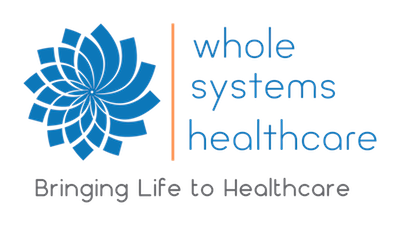- June 15, 2022
- Kye Peven
- Health & Wellness
Though humans are one of the most adaptable and flexible species on the planet we still have important needs and requirements that must be met in order to live our fullest potential. This is especially true in today’s modern world due to the intense disruption of our connection to nature and the natural environments we are biologically accustomed to. We are now bombarded by all kinds of stresses that didn’t exist even 50 years ago, much less hundreds or thousands of years in the past. These stresses are chemical, electromagnetic, and psychological and emotional, among others.
Therefore, what used to be the only way to live must now be something we consciously choose for ourselves. The foundations of health encompass aspects of our environment we typically take for granted, and require us to confront stressors we may have never considered before.
Though this article is divided into sections, one area is not necessarily more important than another, though the sections are ordered roughly by importance, and within each section the recommendations are also ordered roughly in order of importance. Note that the ordering is by importance, not by convenience, so more impactful changes may come before easier ones.
Food and Diet
There’s no need to go into the importance of food and diet, as most people understand that what you put into your body has an impact on your health and how you feel. Because humans have adapted to eat a wide variety of different foods the following recommendations are geared primarily towards navigating the plethora of options now available in modern times.
- Avoid processed foods and eat whole foods whenever possible. If someone from the 19th century wouldn’t recognize it as food it’s probably processed.
- No distracted eating. The only activity that enhances a meal is to eat socially with others. Don’t watch tv, read, work, stand, or drive while eating.
- Cultivate awareness of your body’s cues around food. Pay attention to what and when the body wants to eat. Eat food that both tastes and feels good.
- Eat a variety of foods. Eating the same thing every day isn’t usually healthy.
Recommendations for those that want to put in the extra effort.
- Eat local – food from within 150 miles – and in season as much as possible.
- Buy from farms that use regenerative and permaculture practices, or that adhere to the principles of biodynamics.
More details can be found in the article The 5 Rules of Diet.
Hydration
Water is the substance of life. Without the right amount of water, in the right form, in the right places, good health is not possible. Though there is more to adequate hydration than drinking water, this section is focused on how to increase the quality of your water.
- Drink water that has had chlorine, chloramines, fluoride, heavy metals, and other chemicals filtered out.
- Add a pinch of unrefined salt or other source of trace minerals to your water.
- A very general guideline is to drink an amount (in ounces) of water equal to half your weight (in pounds). For example, a 150 pound person would drink approximately 75 ounces of water.
For those wanting to further increase the quality of their water they should endeavor to drink water that is structured. There are various ways to increase the structure of your drinking water, but that is outside the scope of this article.
Toxicity
The modern world has become increasingly toxic over time as we refine, process, and synthesize more and more chemicals and put them into our environment. These chemicals are everywhere, including rainwater, soil, and even in umbilical cord blood from newborns. They include thousands and thousands of different compounds, most of which have no or minimal testing on human health. Though human bodies can detoxify an astonishing number of different compounds, the more toxicity we are forced to metabolize the more we risk becoming sick; additionally, it takes energy to detoxify, energy which is no longer available for other tasks. Therefore, although some amount of toxic exposure is unavoidable, it is important to reduce our toxic burden as much as possible.
Think about all the products you come in contact with, whether on the skin, through breathing fumes, or through residues on furniture or clothing. Products that are actively used are the most obvious sources of toxic exposure.
- Examine your cleaning products: dish soap, hand soap, detergent, surface cleaner, toilet cleaner, window cleaner, wet wipes, etc. Search for non-toxic brands (such as Branch Basics), or you can make your own from common cleaners such as vinegar, baking soda, castile soap, citrus oils, and other compounds that will not poison you, your children, or your pets.
- Examine your personal care products and cosmetics: shampoo, conditioner, soaps, body wash, moisturizers, lotion, makeup, deodorant, perfumes. For products applied to your skin it should be safe enough to eat, as they’ll be getting into your body through your skin.
- Clothing: wash clothes before wearing them for the first time. Pay attention to flame retardants in clothing, especially clothing for infants. Be aware of chemicals in bedding as well, including blankets, comforters, pillows, etc.
- Avoid products with synthetic fragrances: air fresheners, cleaning products, soaps and detergents, perfumes. Switch to scents that use essential oils instead, or skip the scent altogether.
- Cookware: cook with stainless steel or cast iron pots and pans, as aluminum cookware leaches toxic aluminum into food, and the coating on non-stick pans is easily scratched and can also end up in food. Furthermore, non-stick pans are well-known for sickening birds with the fumes that off-gas during cooking, and thus are not healthy for humans either.
- Food containers: certain plastics will leach chemicals into food and water placed in these containers. Generally the softer the plastic and the hotter the contents the more likely it will leach. Use glass containers if possible, and avoid putting hot food into plastic.
- Furniture: look for furniture without chemical flame-retardants in the foam. Upholstered and cushioned furniture often contains toxic flame retardants; this is especially true for infant products.
- Gardening, pest control: avoid using chemical pesticides, herbicides, fertilizers, and poisons. Control pests with non-toxic alternatives; this will vary depending on the species targeted.
Other areas of concern, especially for more sensitive people, include off-gassing of chemicals from new construction, buildings, cars, furniture and more. Mold in buildings is also a source of toxicity. People working with paints, solvents, and industrial chemicals should also make sure to wear protective gear to avoid excessive exposure.
Light
The influence of our light environment cannot be overstated. Humans are biologically attuned to the daily light cycles as well as the seasonal changes at higher latitudes. The shifting of daily life towards an environment of entirely artificial light is more detrimental than most people realize. The right type of light at the right time is critical for health. Because it is almost impossible to live life outside under natural light only, the following recommendations are geared towards mitigating the impact of excessive artificial light.
- Get 20 minutes of unfiltered early morning sunlight as your first light of the day, watching the sunrise if possible. Expose as much skin to the sun as is comfortable during this time.
- Reduce blue light exposure while indoors, either by installing warmer lights, wearing blue blocking glasses, or both.
- Reduce or eliminate blue and green wavelengths in the evening, as well as reducing the overall brightness of your screens and lights.
- If you spend most of the day inside, throughout the day go outside and get a few minutes of natural daylight to help keep your biological clock accurate. A substitute is to get unfiltered sunlight by opening windows (light coming through glass is not unfiltered).
- Do not wear sunglasses while outdoors.
- Eat and exercise outside in natural light whenever possible.
Recommendations for those that want to put in extra effort, or those that find they are particularly sensitive to their light environment.
- Increase red light while indoors with red light emitters.
- Always use screens and devices with night mode or blue-blocking color filters enabled, except when outside in natural light.
- Eliminate blue and green wavelengths at night by turning off all electric light and using only firelight, such as candles.
Sleep
As a corollary with light, appropriate and timely sleep is a crucial component of a healthy lifestyle. Humans are diurnal animals, and are meant to be awake during daylight hours and asleep while it’s dark. In addition to managing your light environment there are a number of important ways to make sure you receive adequate high quality sleep.
- The bedroom should be completely dark while you sleep. Use curtains to block street lights, remove all devices with indicator lights (or cover the lights at a minimum), and if you use a night-light it should be as dim as possible and red in color.
- No screens 1-2 hours before bed, depending on how quickly you fall asleep (2 hours if it takes you longer than 15 minutes).
- Silence your devices.
For much more information and tools for sleep see my book Natural Remedies for Sleep: Essential Oils, Meditation, Acupressure, and More for a Good Night’s Rest.
Movement
Our modern lifestyles tend to involve a lot of sitting, something that humans before the modern age did very little of. Before the advent of furniture and desk jobs, humans were either sitting on the ground, squatting, standing, or moving. This section is titled movement, not exercise, because consistent movement throughout the day is much more important and creates the foundation for more strenuous exercise.
- If you are still for any length of time during the day, whether for work, or school, take a break and move every 30 minutes. If you are sitting, stand up, stretch, and take a short walk before sitting down again. If you are standing, sitting down and stretching may feel better than walking. This need only be 1-2 minutes.
- Spend 30 minutes daily with movement that increases your heart rate and/or causes you to break a mild sweat. It is best not to exercise at night; perform any strenuous activity during the daylight hours.
Electricity and Magnetism
We are electric beings, and the influence of electromagnetic frequencies (EMF) on the human body is well documented, though not particularly well known or understood. We have filled our modern world with more and more non-native EMF, and we have become more and more separated from the natural radiation of the sun and the earth. Some doctors and other professionals feel this has contributed to the increased rates of chronic disease, particularly autoimmune, neurologic, and metabolic conditions. It’s undoubtedly increased the number of people who are hypersensitive to EM radiation. The following are a few recommendations on both strengthening your system as well as reducing and mitigating the impact of these non-native frequencies.
- Find ways to physically ground on a daily basis.
- Walk barefoot outside, or immerse yourself in natural bodies of water.
- Purchase a grounding mat or sheet for your bed.
- Reduce non-native EMF in your environment.
- Airplane mode your devices when not using them, especially at night while sleeping.
- Turn off your router at night.
- Carry your devices at least 1 inch away from your body.
For those that are more sensitive
- Hardwire all devices in your house and eliminate WiFi.
- Identify devices that emit dirty EMF and eliminate them. Common sources include fluorescent lights, dimmer switches, ungrounded computers, SMART meters, wireless appliances, televisions, etc.
- Consider bringing in an expert to evaluate your space.
Connection
Humans are social animals, and healthy connection and relationship are a necessary part of the foundations of health. Since this is potentially a much more complex topic no specific recommendations will be given in this article. However, consider that feeling alone is as detrimental to health as smoking a daily pack of cigarettes1, and you will realize how important it is to stay connected.
Author
-

Dr. Kye Peven, ND, DSOM, EAMP, earned a B.S. from UC Berkeley in Materials Science and Engineering, with minors in Nuclear Engineering and Energy Management, believing that applying his interest in technology would help make the world a better place. He then completed a Doctorate of Naturopathic Medicine (ND) and a second Doctorate of Science in Oriental Medicine at the National University of Natural Medicine (NUNM). Dr. Peven serves as Director of the WSHC Clinical Care Initiative and is the founder and Clinic Director of the WSHC Seattle Clinic.
View all posts



